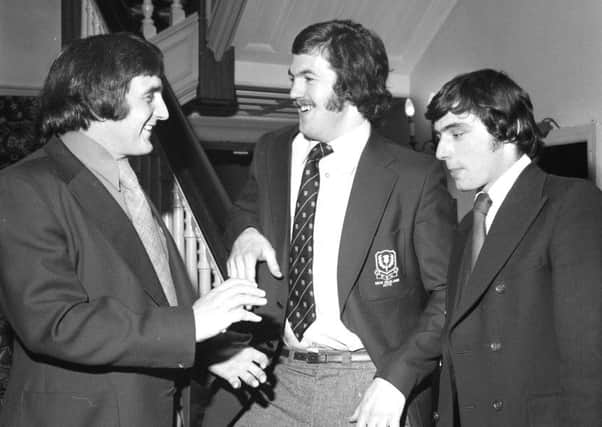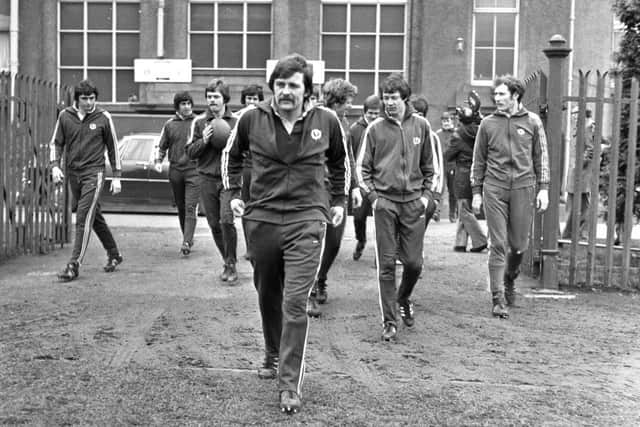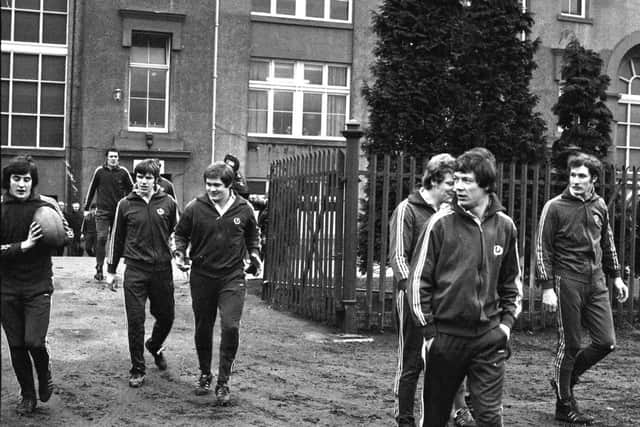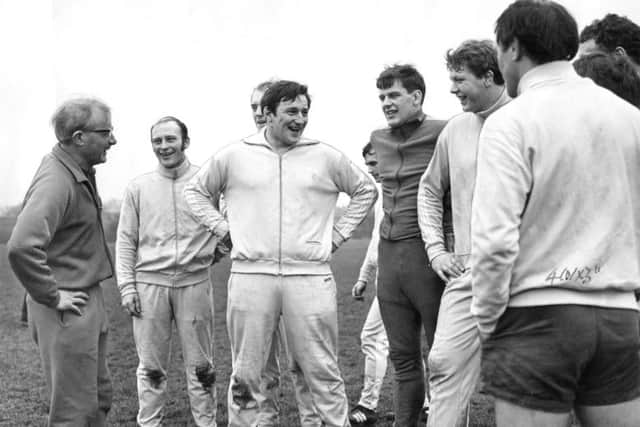The story of Scotland's 1976 Calcutta Cup win - part II


“Assuming one was right in seeing Saturday at Cardiff as the day of reckoning for the present regime in Scottish international rugby - selectors, coach and captain - then 28-6 surely means a new cast at the top next season,” wrote Norman Mair in The Scotsman.
These were strong words from Mair, in an era when calling for heads to roll just didn’t happen in rugby reporting. The respected rugby writer took the SRU to task for not allowing the national team coach, Bill Dickinson (officially, ‘adviser to the captain’), a say on the five-man selection panel which picked the team, while at the same time consigning Dickinson to history with Scotland only half way through their campaign “always assuming he does not suddenly take it into his head to step aside now and resign”.
Advertisement
Hide AdAdvertisement
Hide AdContinued Mair later in the article: “To the more obvious candidates [to replace Dickinson] such as Adam Robson and Jim Telfer, I should myself wish to add the name of Nairn MacEwan - a personal thought.” This was a suggestion from out of the blue, because MacEwan was then only 34 years old, living in Inverness and playing for Highland. Yet despite the delayed mention of MacEwan’s name in Mair’s copy, way down in the 13th paragraph, the article’s headline and positioning in the newspaper gave the game away. “MacEwan as next coach” was the headline, as a piece of midweek commentary became the back page splash in that day’s Scotsman. Within months, Dickinson was out and MacEwan was in.


Scotland’s team for the forthcoming Calcutta Cup match at Murrayfield was to be named in a couple of days’ time - although Mair had already called two of the subsequent changes in his well-informed analysis of the coaching situation - but in the meantime the SRU faced the unwelcome distraction of threats purported to be from the IRA that the Scotland rugby team and supporters would be the target of attacks if the national team fulfilled its fixture with Ireland in Dublin the following month. Threats to the lives of players and supporters were contained in letters sent to the SRU and clubs connected to international players - although the Provisional IRA denied it had sent them.
Four years previously, the SRU had refused to play in Dublin because of unrest, and the situation remained tense, and in the two-week build-up to the 1976 Calcutta Cup, news reports were dominated by the Troubles. The death of IRA hunger striker Frank Stagg sparked fears of reprisals, and rubber bullets were fired as violence flared at a memorial service for Stagg. There were also IRA bomb attacks in Dublin and Belfast, where three women were shot dead in a further incident. However, the SRU decided to go ahead with the match in Ireland after consulting the players - at the same time as the Scottish Football Association announced that it would not go ahead with a British Championship match against Northern Ireland in Belfast because of the security risk.
Elsewhere in the news, the headlines had a familiar ring. “SNP could hold balance of power at next election warns Lord Byers”, read one typical headline, with opinion polls putting the Nationalists seven points clear of the rest and placing constitutional reform firmly on the agenda in the form of a proposed referendum on a Scottish assembly and a White Paper on devolution. The letters pages of The Scotsman reflected this debate, with a Neal Ascherson article headlined ‘If the English say No’ provoking a deluge of fevered responses that went on for a week.
At Westminster, the Chancellor of the Exchequer was ordering vast cuts in public spending. “Healey axe falls heaviest on local authorities” read the headline. To complete the contemporary parallels, junior doctors were fighting an overtime battle.


And LS Lowry died. Or as Brian and Michael would put it two years later, on their way to the top of the charts, “the fever came and the good Lord mopped his brow”.
Back on the sports pages, Scotland’s selectors made significant changes when the team to face England was announced ten days before the match. The pivotal position of stand-off was handed to Ron Wilson, an uncapped 22-year-old, who was to be partnered by his London Scottish team-mate Alan Lawson, the scrum-half returning to national duty after a two-year absence.
Advertisement
Hide AdAdvertisement
Hide AdIan McGeechan moved from stand-off to centre, displacing Jim Renwick who, along with Dougie Morgan and George Mackie, had paid the price of the Cardiff defeat by losing his place on the team.
In the pack, the selectors also handed a debut to Alan Tomes at lock forward, shunting Alastair McHarg back to No8 in place of Mackie.


Tomes, who at that time commuted from Gateshead twice a week to play for Hawick, added much-needed ballast to the pack, and the maverick McHarg would have more freedom to cause mayhem from the back row, his punches thrown at Phil Bennett in Cardiff not held against him by the selectors. “There could hardly have been a more unfortunate match in which to make an example [of a player]” wrote Mair, “what with so inadequate a display by the referee.” Dr Cuny, the French referee, had pulled a muscle with 30 minutes of the game remaining, refused to be replaced, and limped along well behind the play to the exasperation of both the Welsh and Scottish teams.
Billy Steele was reckoned to be fortunate to keep his place in the wing following “an afternoon to forget” against Wales, and Ian McLauchlan - whose popularity was not universal - retained the captaincy. “Among those who will not be pleased by the retention of McLauchlan will, I suspect, be England,” wrote Mair.
England made only one change to the team that had been comprehensively beaten by Wales at Twickenham, and it was an enforced switch. Peter Squires had broken his arm against the Welsh, and Alan Morley was called in as the replacement winger, only to then report that he rated his chances of being fit as “50-50”. As it turned out, his prospects were not even that good, and he was in turn replaced by Ken Plummer. But the minimal amount of changes to the team perhaps reflected England’s limited options. Only two of the back line, Alistair Hignell and David Duckham, would be considered recognisable names today, and speculation over who could freshen up the side had not delivered a stellar cast waiting in the wings. England looked far stronger in the pack, with Mike Burton, Peter Wheeler and Fran Cotton in the front row, Bill Beaumont in the second row, and Andy Ripley in the back row alongside Tony Neary. Ripley was a giant of a man, a supreme athlete, and a daunting opponent. He was an inspirational figure, the kind of colossus every country hoped to have in its ranks. But for Ripley, then at his peak, the cauldron of the 1976 Calcutta Cup at Murrayfield was a defining moment in his career. He would never play for England again.